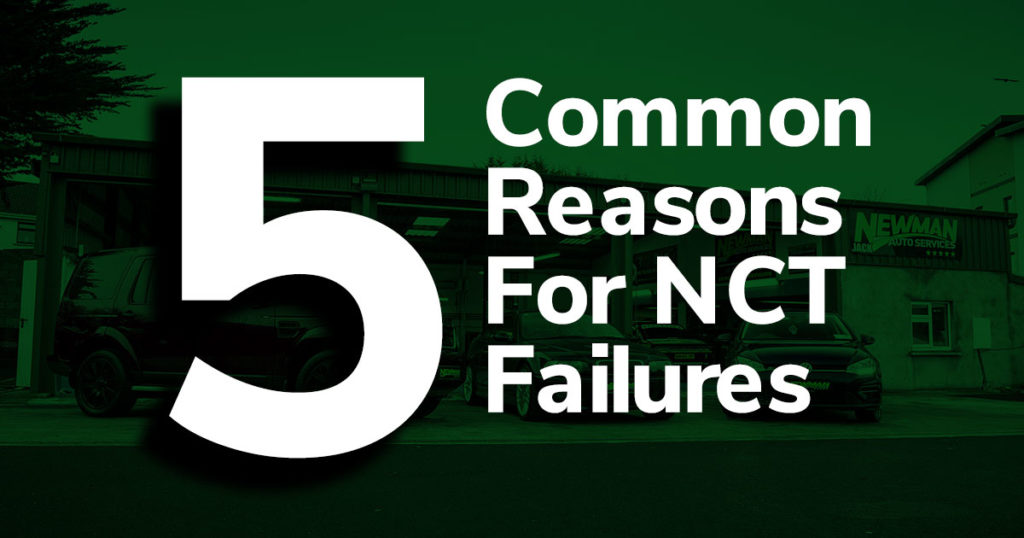This month I decided to write about regular things we see coming through the door that have been failed in the NCT. I see these words regularly on job cards – “calipers”, “wishbone bushings”, “brake lines / hoses”, “suspension” etc. but I don’t understand what they are or what they do.
I’ve explained in my previous post about what constitutes a regular service, e.g. oil and filters. However, the NCT is looking at different elements of the car’s safety. I’ve asked Jack to explain some of them to me and now I will pass on my newly acquired knowledge.
Common Failures:
- Brake Calipers = this might show up as a “brake imbalance” on the NCT report. The role of the brake caliper is to squeeze the brake pads together which then in turn slows the wheels down. Most cars have 4 calipers, one on each wheel. Older, smaller cars are fitted with brake cylinders and shoes on the rear wheels only.
- Wishbone Bushings = these are part of the suspension. They can comprise of ‘bushings’ and ‘ball joints’. They create a barrier between the parts that it holds (which I’m told are too complicated to get into here) and they prevent metal-to-metal contact. The wishbone bushings are key to the safety of your car steering and handling.
- Suspension = comprises of lots of smaller parts: wishbone bushings, ball joints, wishbones, shocks etc. as explained above, an NCT failure for the wishbone bushings is only part of the suspension. Another suspension failure on an NCT might be an “imbalance”. This would be related to the shock absorbers whereby one is stronger than the other. The faulty shock absorber could be lacking fluid, or burst from a bang such as going over a pot hole.
- Brake Lines / Hoses = typically fail on “advanced corrosion” or “damaged/perished”. The role of the brake lines/hoses is to carry the brake fluid to the brake calipers (as explained above then squeeze the pads together). The hoses are made of rubber which may become damaged/perished from age or debris. The lines are a metal pipe which may become corroded from salt on the roads, or due to age.
- Headlight Alignment – every car is stamped to indicate the settings of the headlights for that car. If they are set too high it’s blinding to oncoming cars, and if its set too low its hazardous for visibility. The headlight alignment requires specific equipment for setting correctly which the likes of a mechanic will have in their garage, it cannot be set using subjective guess work. It is recommended to set the headlight alignment while the car is in the same way as it will be when presenting at the NCT, for example with or without shopping in the boot as this can affect the level of the car.
Jack and the lads will always give you their professional advice when you leave your car in for a pre-NCT check with us. They will carry out a 53-point health check that covers all aspects of an NCT and they will advise accordingly if there is something serious that will definitely fail the NCT or where something is of a quality that could pass but where there is no guarantee. Mechanics in garages such as ours will always ensure your car is safe to drive and provide you with their professional opinion, unfortunately however what a mechanic may deem as safe could be failed in the NCT. We endeavour to inform you, from the best of our knowledge and years of experience, what may fail in the NCT but we cannot make any guarantees as they are a separate entity to us.
I hope this helps to show the difference between what is covered in a regular service and what aspects are tested in the NCT, and I hope that it helps some people to understand the workings of some parts of their car that they may have heard about but had no reason to understand what they were or why they could cause a car to fail the NCT.
If you have any suggestions for our next Blog post we would be delighted to cover a topic of interest to our customers. Please email us with your ideas to jnewmanautoservices@gmail.com

